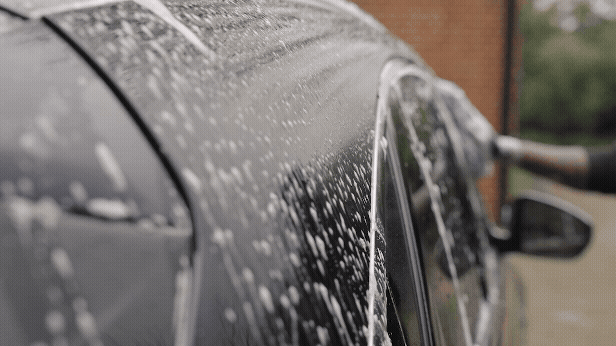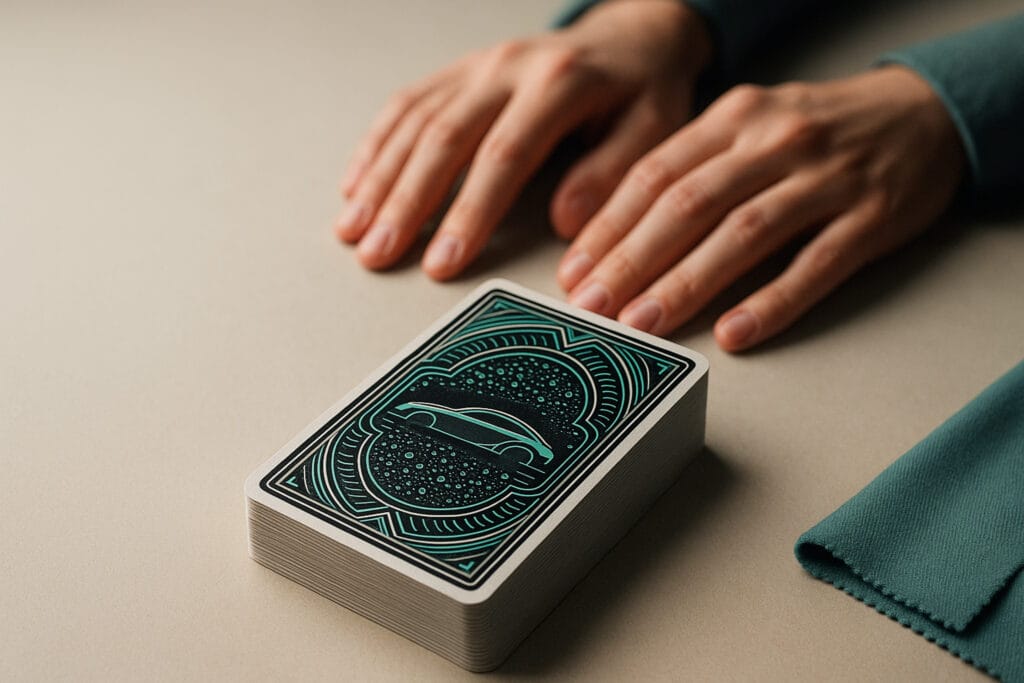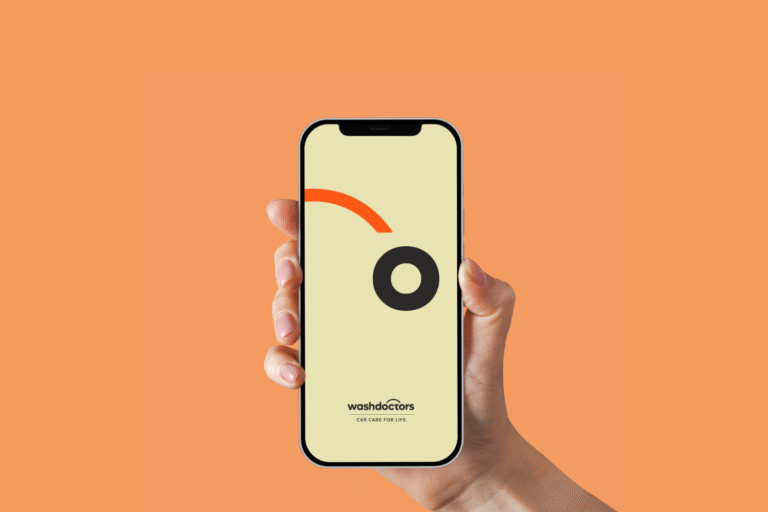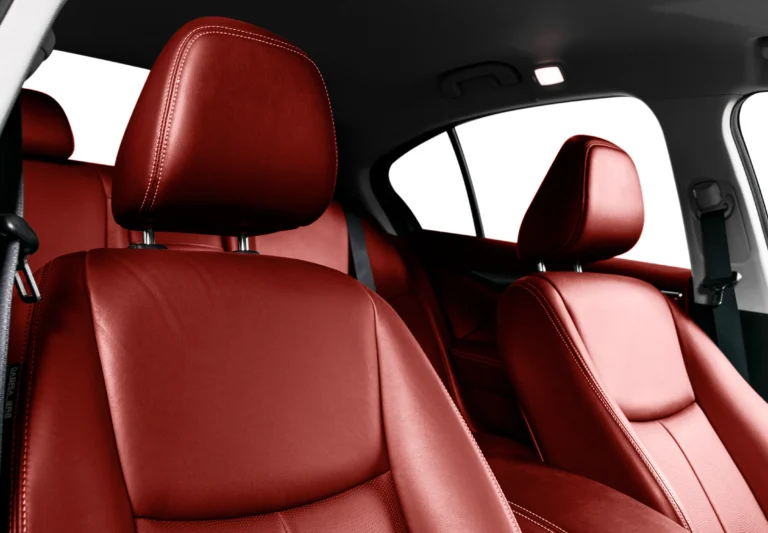Seven common car-cleaning myths, debunked. Learn the safe wash steps that protect paint, save time, and help you decide when to book a valet, detail or smart repair.
Quick answer: The fastest or cheapest wash is not always the best value. Safe washing uses pre-wash to lift grit, pH-neutral shampoo for lubrication, clean microfibre mitts, and gentle drying with plush towels. Sponges, harsh chemicals, and ‘quick shine’ tricks can create swirl marks, strip protection, or hide defects instead of fixing them.
Contents
- What this guide covers, in 60 seconds
- Myth 1: “A quick hand wash is always good enough”
- Myth 2: “Snow foam is a gimmick”
- Myth 3: “Sponges are fine if you rinse often”
- Myth 4: “Chamois gives the best dry”
- Myth 5: “Strong chemicals clean faster and better”
- Myth 6: “Wax is only for show cars”
- Myth 7: “Black cars always look scratched, nothing you can do”
- A safe, simple wash routine
- When each option is worth it
- How to book
- FAQs
- Media and extras
- JSON-LD
What this guide covers, in 60 seconds
- The most common mistakes that create swirls, streaks, and wasted spend.
- Quick “Myth vs Fact” busts you can skim and act on today.
- A safe wash routine you can follow at home or ask your valet to use.
- When to choose a professional valet, detailing, or smart repair.
Myth 1: “A quick hand wash is always good enough”
Myth: If it looks clean in 15 minutes, job done.
Fact: Many rapid washes skip pre-wash and safe contact techniques. Dirt dragged across paint causes micro-marring and swirls. It looks fine in the shade, then shows lines in sunlight.
What to do instead: Pre-rinse, apply a pH-neutral pre-wash or snow foam to lift grit, then contact wash with a clean microfibre mitt and lubricating shampoo.
Best for: Daily drivers, dark paint, lease cars.
See also: /valeting | /reviews
Myth 2: “Snow foam is a gimmick”
Myth: Foam is just for photos.
Fact: A good pre-wash softens and carries away grit before you touch the paint. That reduces risk during the contact wash stage.
What to do instead: Use a citrus or pH-neutral pre-wash on lower panels and wheels, allow dwell time, then rinse thoroughly before contact washing.
See also: /detailing
Myth 3: “Sponges are fine if you rinse often”
Myth: Frequent dips keep a sponge safe.
Fact: Flat sponges trap grit on the surface. Even if you rinse, that grit is dragged back across the paint.
What to use: Deep-pile microfibre or lambswool mitts. Pair with a two-bucket setup with grit guards and refresh your rinse water often.
Upgrade tip: Assign one mitt to upper panels and another to lower, dirtier areas.
Myth 4: “Chamois gives the best dry”
Myth: Chamois removes water fastest and leaves a shine.
Fact: Chamois are grabby. They can induce light scratching and leave faint trails when used on imperfect paint.
What to use instead: Soft, plush microfibre drying towels. Lay and lift, or glide with very light pressure. A drying aid or quick detailer adds lubrication and gloss.
Myth 5: “Strong chemicals clean faster and better”
Myth: High-alkaline TFRs and wheel acids are the quickest route to clean.
Fact: Aggressive products can strip protection, stain trims, and dull sensitive finishes if misused.
What to do instead: Start mild. Use pH-neutral shampoo and wheel cleaner that targets iron and brake dust without harsh acids. Escalate only when needed and follow dwell times carefully.
Myth 6: “Wax is only for show cars”
Myth: Protection is overkill for daily drivers.
Fact: A simple wax or spray sealant protects against grime and UV, makes washing quicker, and keeps the car looking better, longer.
What to do: After a clean, apply a wax or ceramic-safe topper. For maximum durability, consider professional protection as part of a detail.
See also: /detailing
Myth 7: “Black cars always look scratched, nothing you can do”
Myth: Dark paint is hopeless.
Fact: Good technique prevents most marring, and light machine polishing can visibly reduce existing swirls.
What to do: Adopt safe wash steps and schedule a corrective or enhancement detail if you already see swirls. Small chips and scuffs can be handled via /smart-repair.

A safe, simple wash routine
- Pre-rinse and pre-wash
Loosen and lift grit with a pH-neutral or citrus pre-wash, especially on lower panels and wheels. Rinse thoroughly. - Contact wash
Two buckets with grit guards. pH-neutral shampoo. Deep-pile microfibre mitts. Top to bottom. - Rinse
Panel by panel, top to bottom. Watch for trapped suds in mirrors and trims. - Dry
Use plush microfibre drying towels. Lay and lift or light-glide. Consider a drying aid for lubrication. - Protect
Apply a spray sealant or wax to extend cleanliness and make future washes quicker. - Interior quick reset
Vacuum, gentle APC on touchpoints, glass, mats out and dry. For stubborn stains or odours, book a valet.
When each option is worth it
- Hand car wash: You need the quickest tidy at the lowest upfront cost and accept some risk to the finish.
- Professional valet: You want safer methods, better drying, and light protection without leaving home or work.
- Detailing: You want defect reduction, deeper decontamination, and durable protection on valuable or dark paint.
- Smart repair: You have scuffs, chips, or minor panel damage that cosmetic repair can solve on your driveway.
Explore detailing | Ask about smart repair
FAQs
Is a quick roadside wash bad for my paint?
Not always, but many skip pre-wash and safe contact methods. That increases the risk of swirl marks, especially on dark colours.
Why is pH-neutral shampoo recommended?
It cleans with lubrication and minimal stripping of existing protection. Aggressive cleaners can dull finishes and remove wax.
Do I need two buckets?
Yes. One for shampoo, one for rinsing the mitt. It keeps grit out of your wash water and away from the paint.
What drying towel should I buy?
A plush microfibre towel with good GSM. Avoid chamois or anything that drags.
How often should I wash my car?
Every 2–4 weeks for daily drivers. Increase frequency in winter or if you park on the street.





